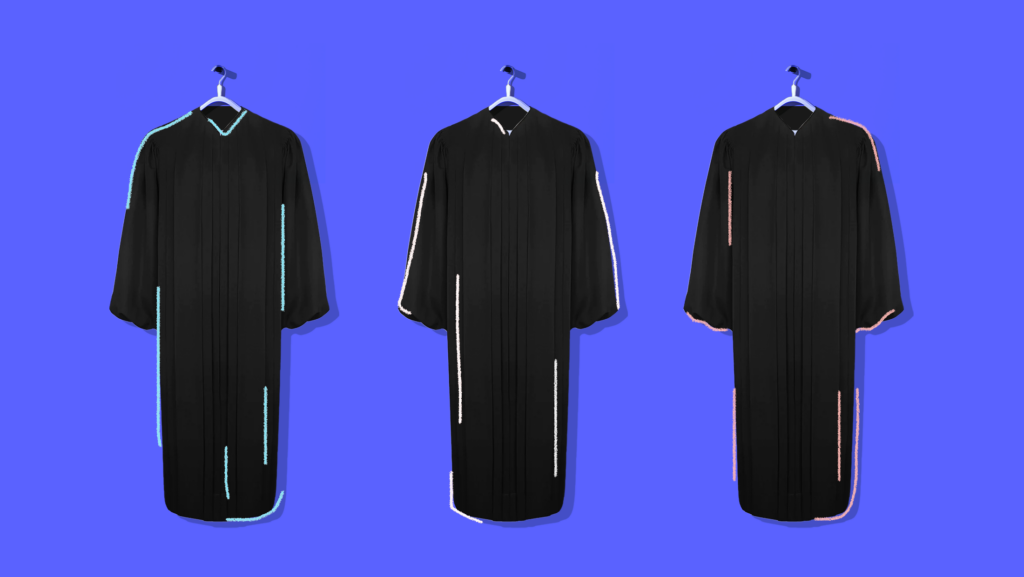To Fight the Supreme Court, Build the Bench

The end of the U.S. Supreme Court’s term made one thing very clear: Conservative judges appointed by former President Donald Trump are doing incredible damage to our democracy.
Whether it’s the Supreme Court’s willingness to roll back affirmative action, LGBTQ+ protections and clean water provisions or lower court judges like Matthew Kacsmaryk and Aileen Cannon willing to blindly rule in favor of conservative litigants and causes, everywhere we look, judges appear to be at odds with what most Americans want and what the U.S. Constitution demands.
We do, however, have cause for celebration. Democrats are finally building a counter-insurgency to confront an increasingly captured and corrupt judiciary.
This summer, the Senate has confirmed some truly brilliant lawyers, fierce advocates like Dale Ho, Julie Rikelman, Casey Pitts, Natasha Merle. Tiffany Cartwright and Rachel Bloomekatz. Due to Republican senators’ obstruction, these champions of civil rights had been pending for months — and in some cases years. But they are now confirmed and that is welcome news. Each represents exactly the kind of movement lawyer we at the Alliance for Justice have been laboring to have confirmed.
What is a movement lawyer?
Movement lawyers are lawyers who have dedicated their work to the common good, sometimes called public interest litigators. They represent the best of our legal profession because they defend our freedoms to vote and to access the health care we deserve, fight for our right to a fair trial and against a racist and deeply flawed criminal justice system and advocate to protect our environment and those who are harmed when corporations put profits over people. Truly, they are the lawyers who should be serving as lifetime judges guarding our public trust in the rule of law.
For generations, they were kept off of our federal benches. Their work was somehow too controversial for confirmation. A Washington consensus had formed suggesting the only paths to being a judge were through a career at an elite law firm or as a prosecutor. So, our brightest lights could never bring their legal luminescence to judging. What’s more, they could not insert their well-honed views of the Constitution into our public law.
Senate Majority Leader Chuck Schumer (D-N.Y.), in particular, has offered a compelling example of what our federal courts can be. As of the end of July, Schumer has placed two ACLU lawyers, an NAACP Legal Defense Fund litigator, an Innocence Project attorney, a plaintiff’s champion and the General Counsel of the Girl Scouts on New York’s district courts. Add to this that his confirmed circuit court nominees come from the Office of the Appellate Defender and the Brennan Center for Justice.
The progressive ideal would be to ensure that every vacancy — and there are still over 80 of them — is not just filled, but filled with more movement lawyers.
Another incredible model has been Sen. Patty Murray (D-Wash.). Over the past two years, Murray has added incredible professional diversity to the federal bench in Washington State, including immigration attorneys, civil rights lawyers and public defenders. One wonders what our bench would look like if every senator advocated for the judgeships they represent with the same vigor that Schumer and Murray have.
For all that has and can be accomplished, one major obstacle that lies ahead — and one entirely within Democratic control — is the blue slip. The blue slip is to judicial nominations what the filibuster is to legislation. It is a made up, arcane Senate tradition that empowers the minority at the expense of our collective will. Republican senators continue to have a veto over judges nominated to the vacancies in their state and, in most cases, they have shown no interest in filling them while President Joe Biden is in office. They prefer judicial red zones throughout the country where conservative litigants can wage war on our rights with no fear of a judicial slap down.
Consider, for example, the seven district court vacancies in Florida. A Trump appointee like Aileen Cannon is far more likely to be assigned to Trump’s criminal case if four of the other seats in her district are simply empty. And voila! That simple math worked in Trump’s favor.
Similarly, there are eight district court vacancies in Texas, where judges like Matthew Kacsmaryk have blocked the distribution of mifepristone and targeted any number of other rights, protections and liberal policies that affect the entire nation — all because Republican senators fear losing their grip on power. It’s the Merrick Garland blockade all over again. And like that blockade, it abuses our legal system to undermine democracy.
Enough.
We can’t tolerate a system where conservative litigants can effectively forum shop their next terrible legal theory. We must recognize the insidious use of the blue slip for what it is: a political device used to maintain control of the courts. Like the old boy network that birthed this rule, it’s time to get with the times and say goodbye. Simply put, what we do next is the whole ball game. There are 870 judgeships authorized by Article III of the Constitution to resolve questions of our federal law. Trump and then-Senate Majority Leader Mitch McConnell (R-Ky.) filled 234 of them, including three on the Supreme Court.
The progressive ideal would be to ensure that every vacancy — and there are still over 80 of them — is not just filled, but filled with more movement lawyers. That’s the beginning of a resistance to the Supreme Court’s supreme takeover; that’s the beginning of a movement. Because lawyers who understand that our Constitution is for everyone are our best bet for judges brave enough to stand up to this corrupt Court.
Rakim Brooks is a public interest appellate lawyer and the president of Alliance for Justice. As a contributor to Democracy Docket, Brooks writes about issues relating to our state and federal courts as well as reforms to our judicial systems.